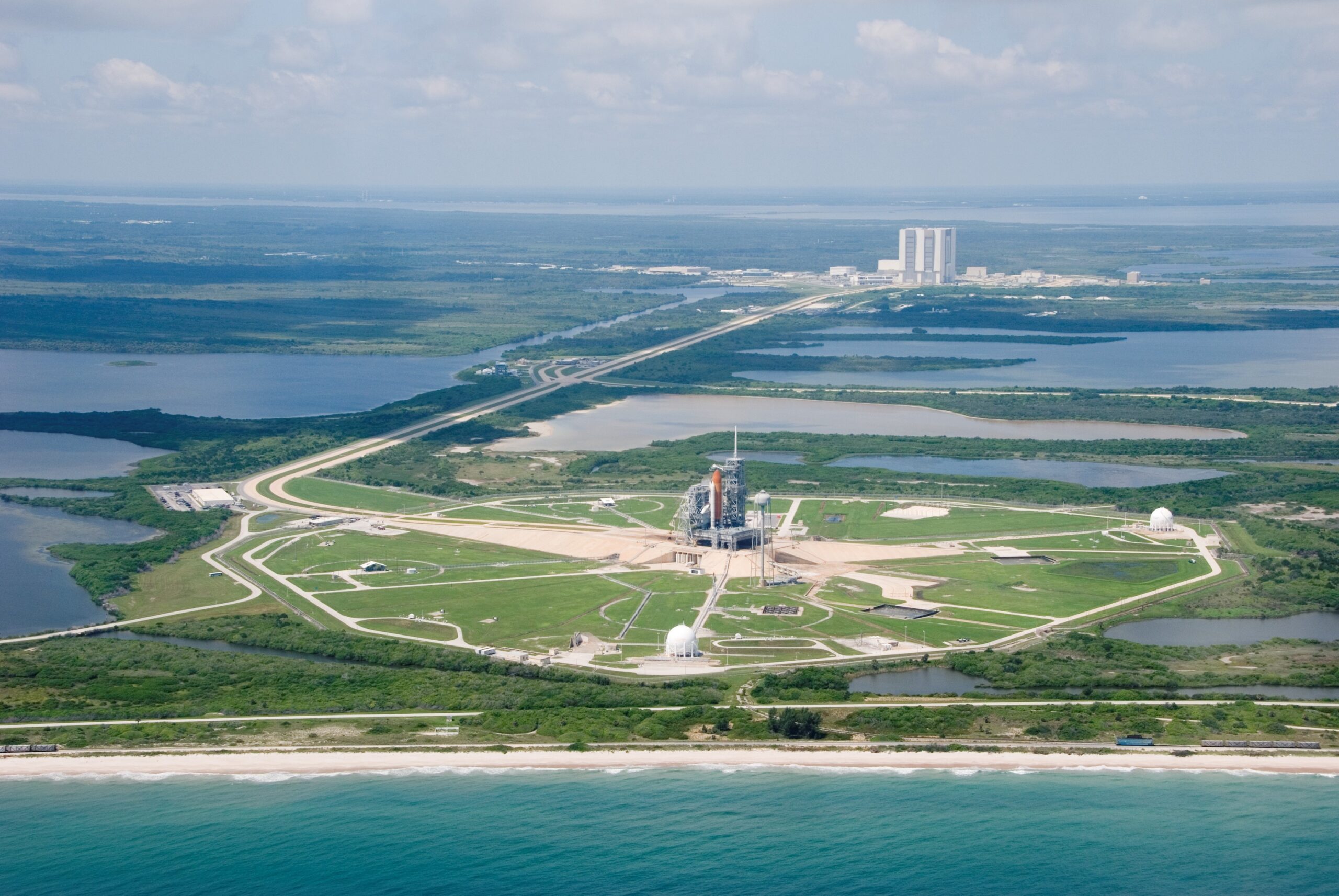Located along Florida's central Atlantic coast east of Orlando, the Cape Canaveral is in Brevard County, between Miami and Jacksonville, and is best known as the epicenter of the country's space program.
On this post
The area around Cape Canaveral was originally explored by Ponce de León five centuries ago, so not only is it at the forefront of technology and space travel, but it's also steeped in some of the country's earliest history.
Scenic beaches and space-related attractions are the most famous attractions there, but they are not the only thing the city has to offer.
Cape Canaveral offers artistic, cultural and historical attractions and is also a really cool destination to spend a day on during your vacation!
Let's check out a little bit about this amazing place called Cape Canaveral.
Cape Canaveral attractions
Kennedy Space Center
Address: Kennedy Space Center Visitor Complex, State Road 405, FL 32899
Of course, we couldn't start this list with another attraction! The Kennedy Space Center is the most visited attraction on the Space Coast and a must-see for anyone interested in science, technology and space exploration.
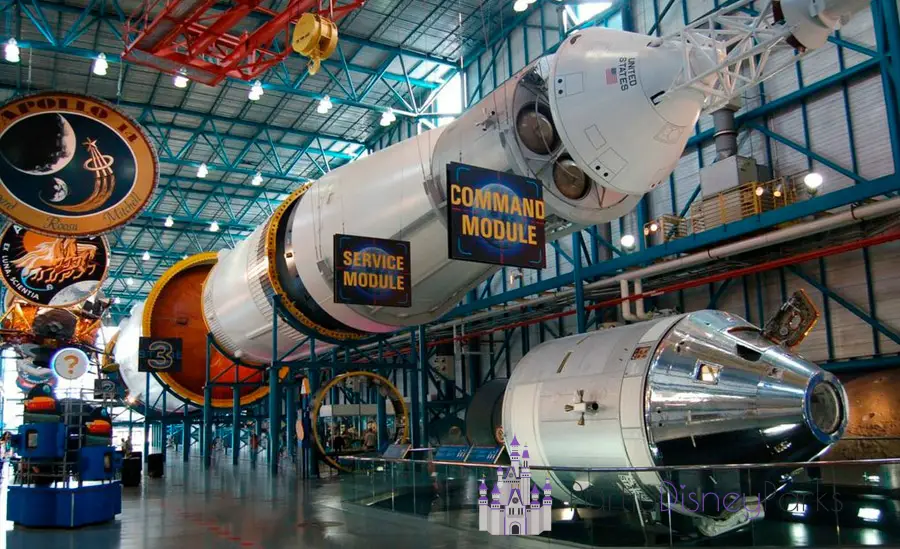
Most of the tours Kennedy Space Center includes transportation and an expert local guide, plus visitors can expect access to many behind-the-scenes areas as well as many amazing interactive exhibits.
Items on display include moon rocks, spacesuits, equipment, photos and first-hand accounts from those who have participated in the program over the years.
The space shuttle Atlantis is one of its biggest attractions, and there is a great gift shop on site that is also worth visiting.
Jetty Park Beach
Address: 9035 Campground Circle, Cape Canaveral, FL 32920, 321-783-7111
If you want to spend the day exploring more than 14 hectares of lush parkland, Jetty Park is the place for you.
It's a breathtaking beach that stretches over four hectares and has all the amenities to soak up the sun, like sun loungers and umbrellas.
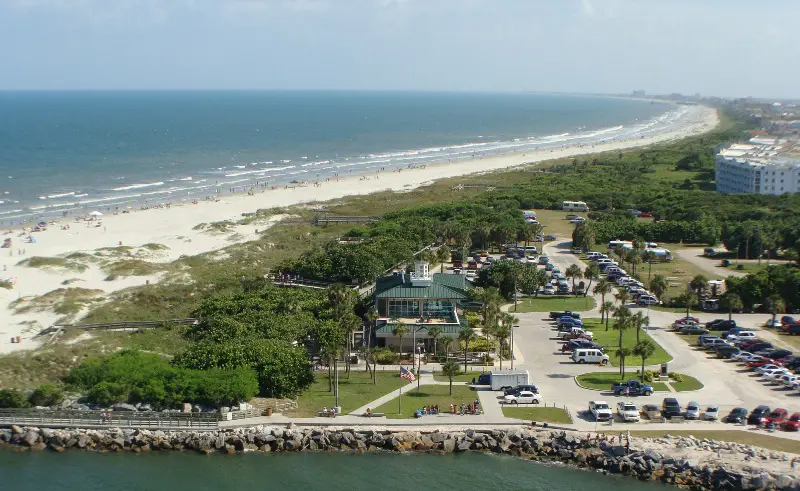
If you prefer to spend the day fishing, there is a special pier that extends out to sea for a fishing experience like no other.
There is also a playground for the little ones and even gazebos for rent, ideal for large gatherings or group picnics amidst the beautiful surroundings of Jetty Park.
Manatee Sanctuary Park
Address: 701 Thurm Blvd, Cape Canaveral, FL 32920, USA
Manatee Sanctuary Park is located on Thurm Boulevard along the scenic Banana River and covers approximately 4 hectares.
It is an excellent opportunity for guests to see manatees in their natural habitat.
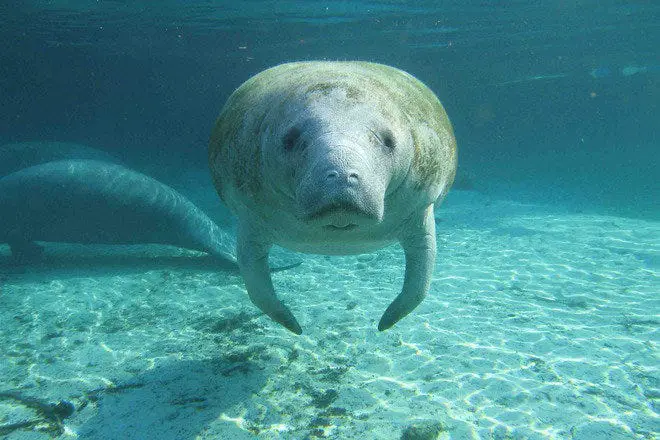
The park has paved paths and boardwalk, as well as several viewpoints along the way.
While manatees don't always show up as they should, the park is a great place for a relaxing picnic or an afternoon stroll.
Manatee Sanctuary Park is open daily from 7 AM until dusk and features covered seating areas with built-in barbecue grills and a children's playground.
Cape Canaveral Lighthouse
The first lighthouse was built around 150 years ago to warn sailors of dangerous areas along the coast.
Unfortunately, the first lighthouse, which was only 18 meters tall, was not tall enough.
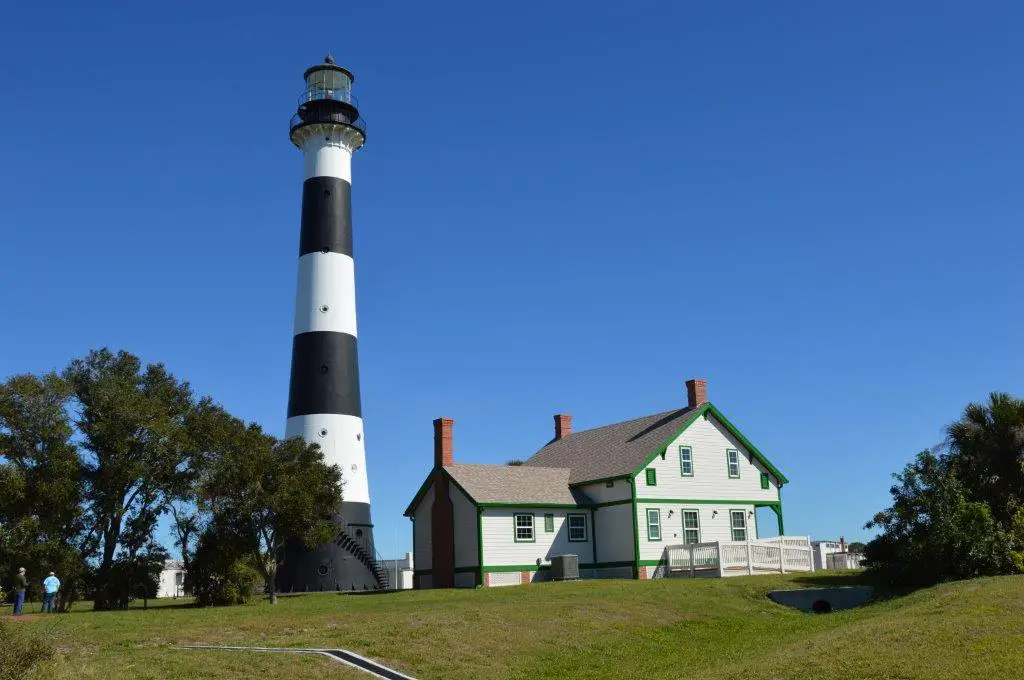
The next one was too close to the shore and needed to be moved, which is not an easy task in an area full of swamps and swamps.
Finally, after ten months of renovation, the new lighthouse was put into operation again in 1894 and remains there today.
The new tower is made up of bolted iron plates and is clad in two layers of bricks. The entire lighthouse is 151 feet tall and sends a beam of light 22 nautical miles out to sea.
Exploration Tower
Address: 670 Dave Nisbet Drive, Port Canaveral, FL 32929
As a proud landmark in Cape Canaveral, the Exploration Tower invites visitors to learn all about the region's history, culture, flora and fauna.
The tower spans seven floors and has multiple observation decks for visitors to enjoy spectacular views of Cape Canaveral, as well as displays that focus on bringing you a hands-on experience through interactive games.
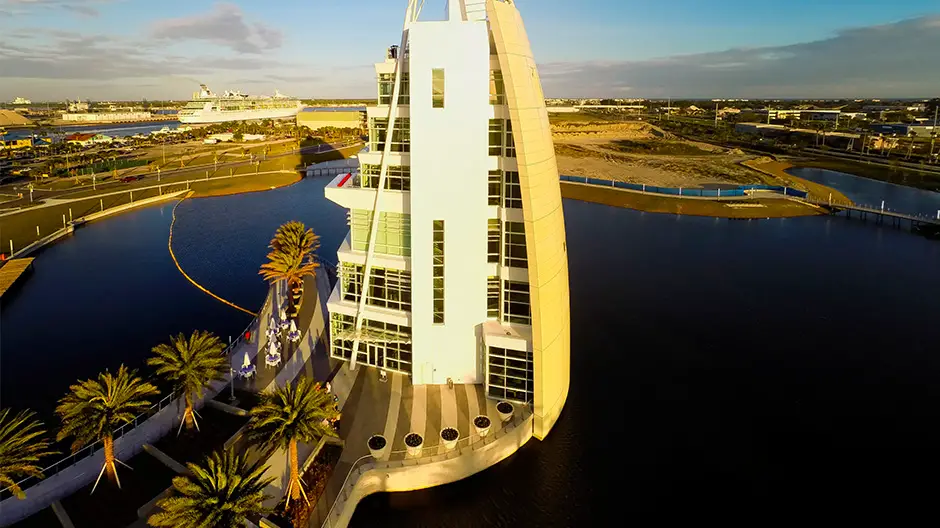
There are movie sections and photo galleries, and you can even pilot a virtual boat or witness a space rocket launch from the nearby Kennedy Space Center.
If you get hungry after a day in the tower, there is an on-site cafe as well as a gift shop to buy your souvenirs.
US Air Force Space and Missile Museum
Address: 100 Space Port Way, Cape Canaveral, FL 32920
If you want to learn all about the history of rockets and space travel, the Air Force Space and Missile Museum is the place to learn a lot.
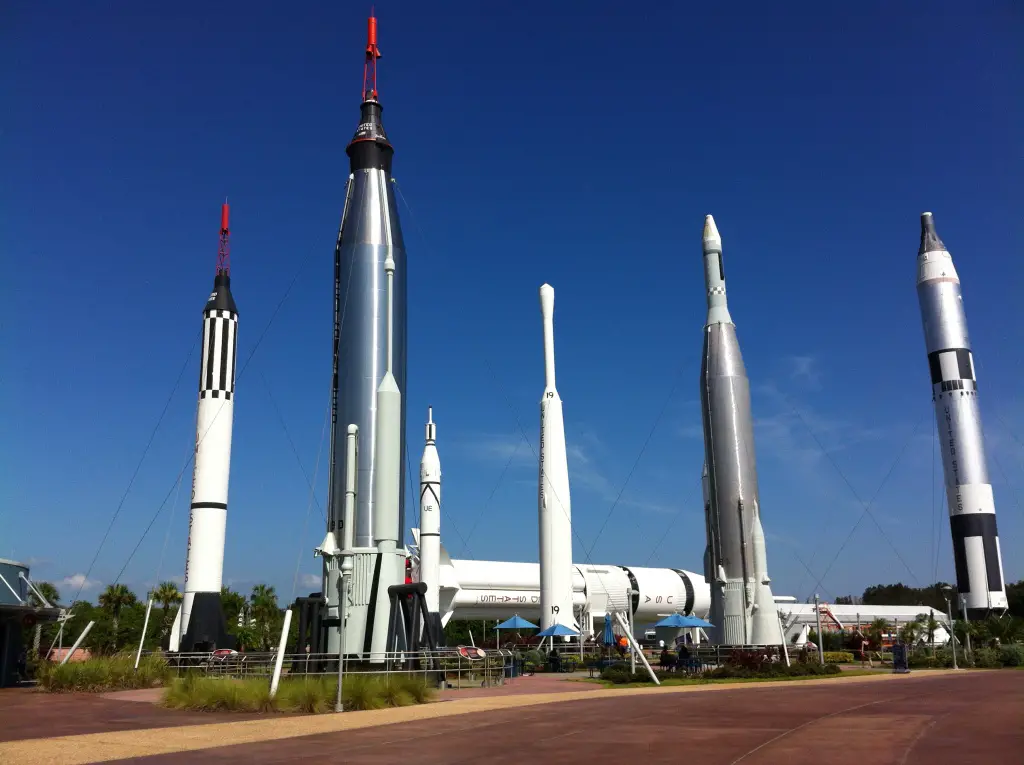
The museum opened in the 1960s and is packed with exhibits from the early days of space travel to the present day, including rockets, satellites, rockets, and historical exhibits that highlight key moments in the history of space exploration, such as famous and past astronauts. unmanned missions.
The museum is not just an indoor space, and there is even a missile garden where visitors can walk around and observe deactivated missiles, launch pads and control towers. A must for rocket lovers.
Banana River Aquatic Preserve
Address: Merritt Island, FL 32952, USA
The Banana River Aquatic Preserve covers nearly 30,000 acres in northern Brevard County, just outside Cape Canaveral.
Most of the reserve is water and visitors have access to several boat docks along the A1A highway.
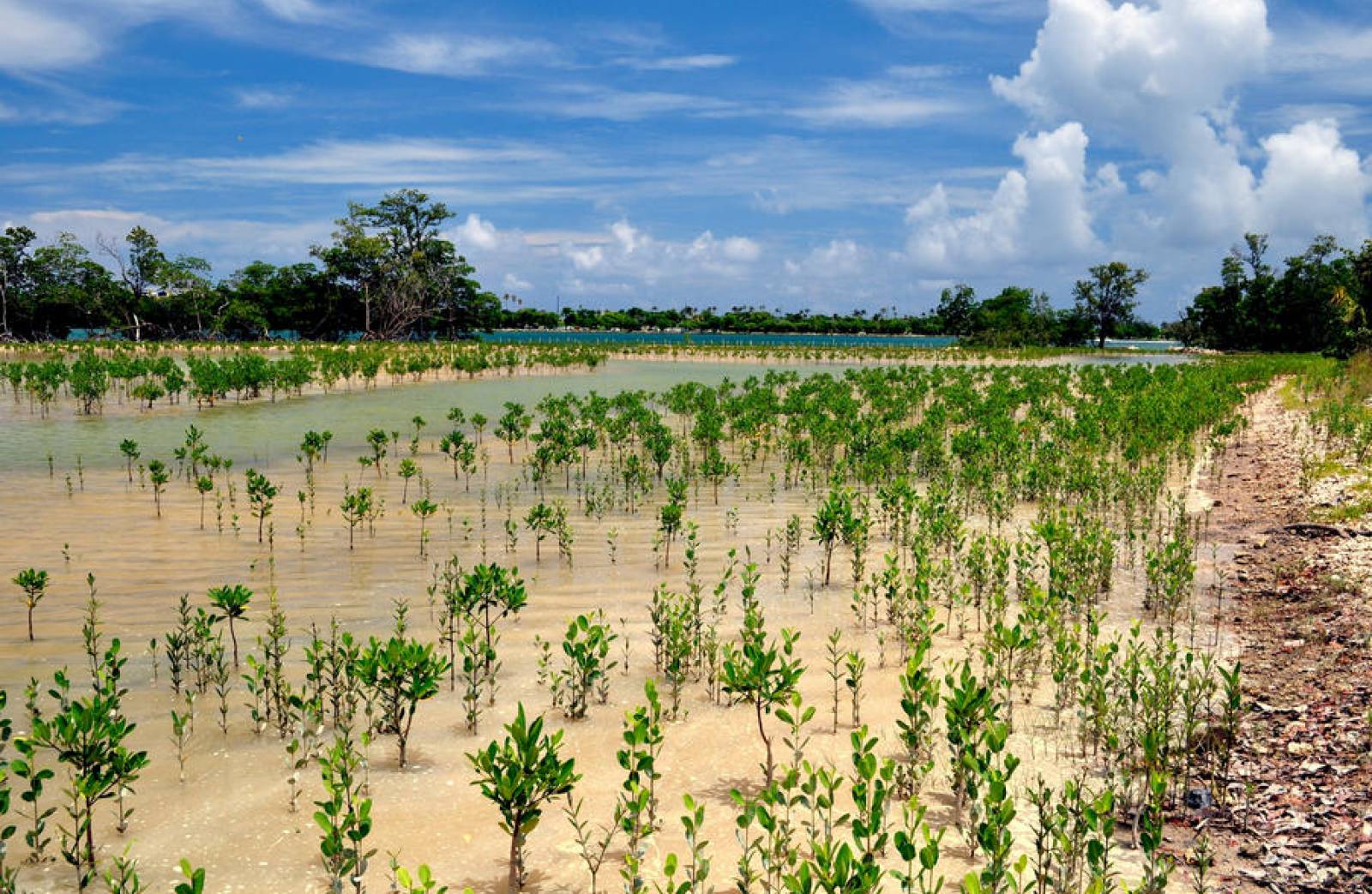
The reserve is home to a wide variety of wildlife, including manatees, crocodiles and sea turtles.
It is also one of the state's largest Atlantic coast pelicans nurseries and a popular area for birding.
For those who enjoy good adventure on their travels, canoes and kayaks are available for rent on site.
The waters here are perfect for those who like to exercise while having fun!
(Mini)Golf N Gator
Address: 6355 N Atlantic Ave, Cape Canaveral, FL 32920
Mini golf is fun for the whole family, regardless of age. And mini golf with crocodiles, turtles and other creatures is an adventure not to be missed.
The Golf N Gator has two 18-hole courses – Gator Mountain and Swamp Cave.
Choose one or play both.
Lush tropical landscape cut by streams and punctuated by waterfalls and two huge dark lakes with turtles, crocodiles and fish lurking on the slopes.
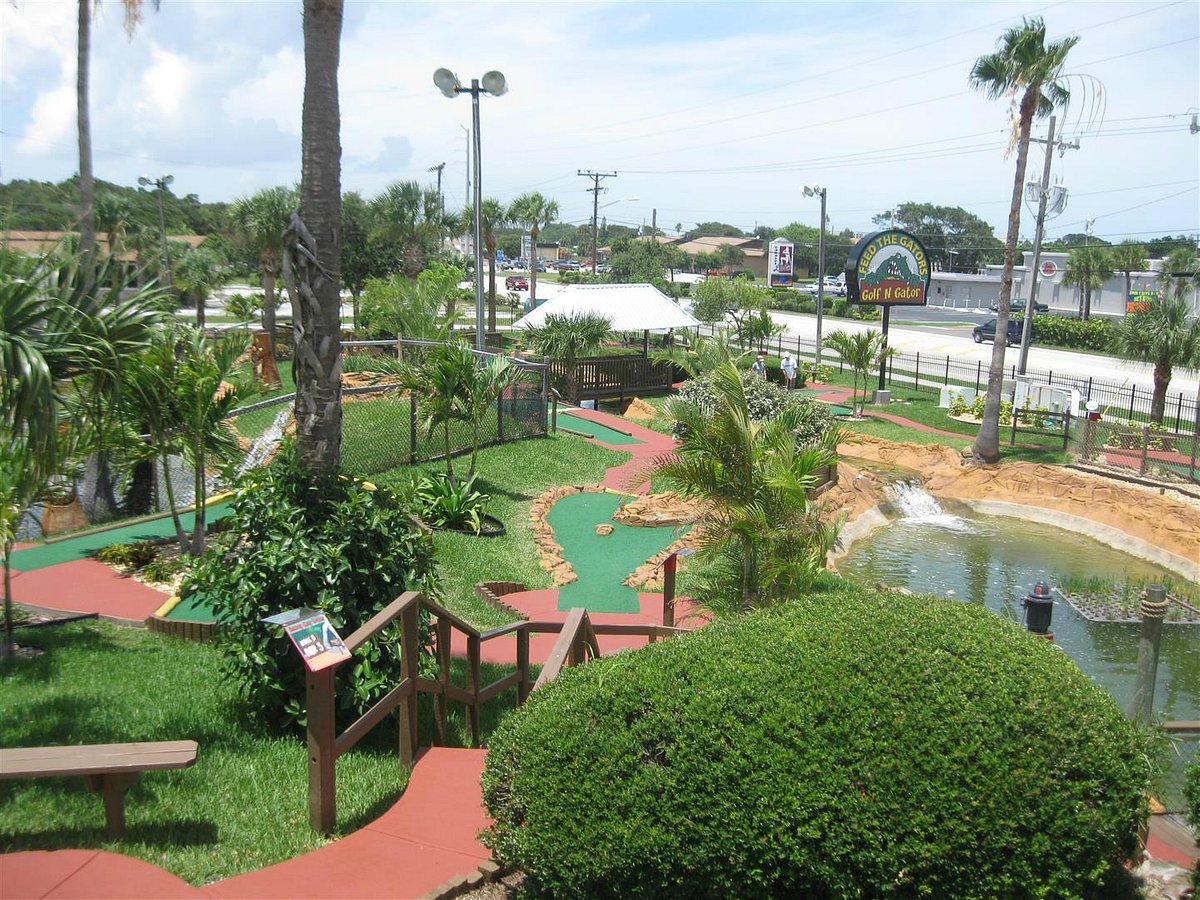
Enjoy the jungle and play to win and when you're done play with the little crocodiles and feed the bigger ones.
Golf N Gator features 30 American crocodiles of all sizes and ages.
You can also play with turtles, snakes, spiders and birds, and even hold them if you dare.
Cocoa Village
Address: 434 Delannoy Ave, Cocoa, FL 32922
Located on picturesque Cocoa Beach, historic Cocoa Village is the perfect blend of old world charm with plenty of modern and contemporary dining, shopping and entertainment in the eyes of many past visitors.
The tree-lined streets The village is perfect for afternoon strolls and there is an array of quaint shops, galleries and restaurants, making it a haven for those seeking relaxation.
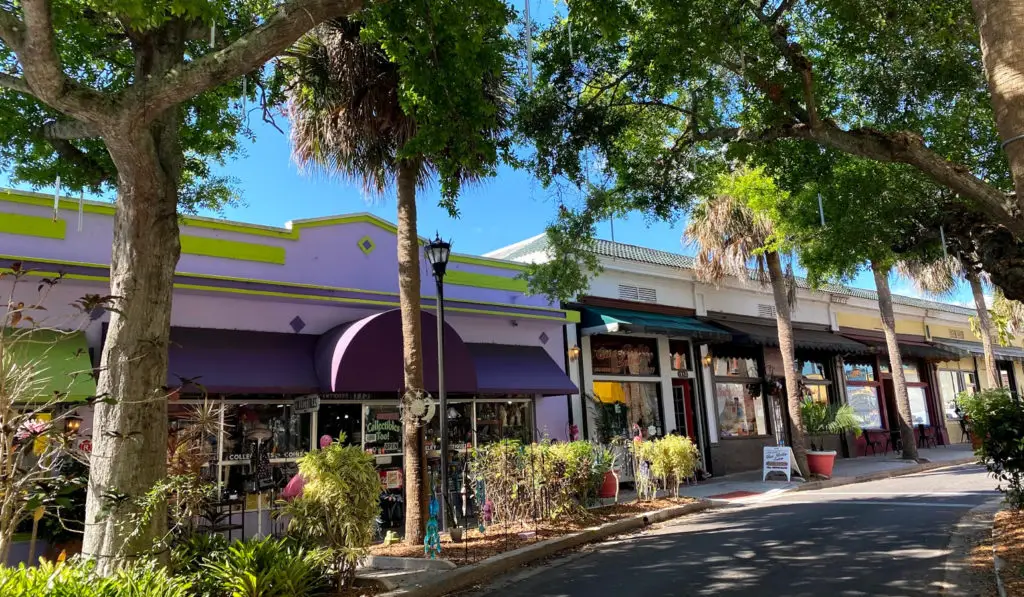
The village also offers a variety of live entertainment and entertainment. mostly on weekends in the fall and winter months when the sun goes down and the weather is almost perfect.
There are also historic landmarks and a popular community theater which is a great place to stay.
Orlando Princess & Canaveral Princess Deep Sea Fishing
Address: 670 Glen Cheek Drive, Cape Canaveral, FL 32920
For something a little different, book a tour and go deep-sea fishing at Cape Canaveral.
Orlando Princess and Canaveral Princess take you on water voyages and the friendly staff will give you the best tips and tricks to give you the best chance of fishing.
Meals include unlimited drinks. and there's no need to bring fishing gear, as everything you need is on board.
There are a variety of excursions to choose from, including full-day or half-day trips, and even overnight trips to catch sharks, which are known to be most active after sunset.
Brevard Zoo
The Brevard Zoo on Melbourne's North Wickham Road differs from many of its counterparts in providing a more realistic environment for the resident animals.
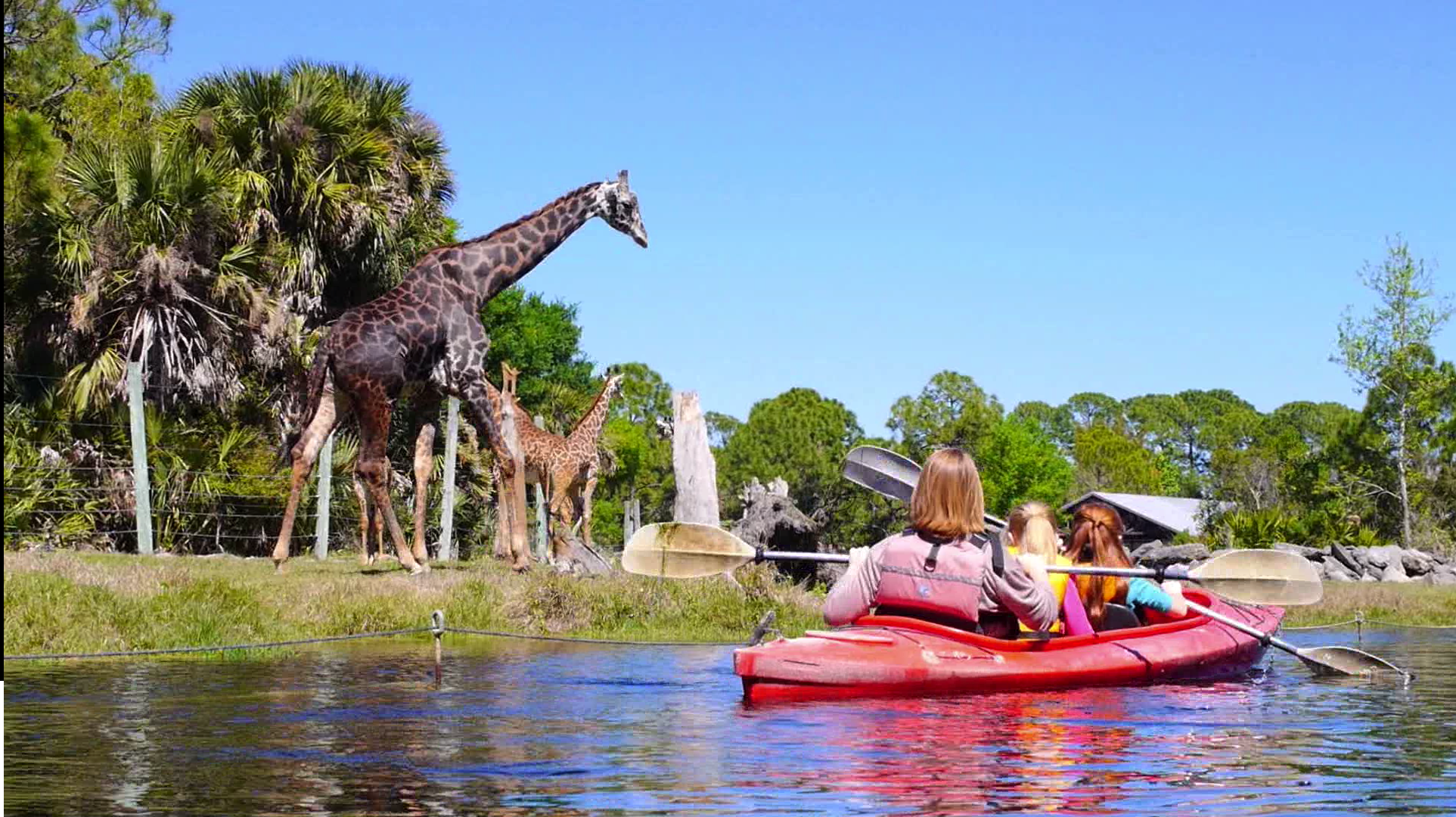
Instead of fences, many of them are surrounded by natural-looking barriers and water, which gives the entire facility an extremely natural feel.
The zoo is home to hundreds of animal species from almost every continent.
In addition to the typical zoo activities, they offer kayaking, zip lining and pedal boat tours for the more active.
The zoo's distinctive areas include dozens of hectares dedicated to various themes, such as the Florida swamps and the African savannah.
Sandy Beach Surfing
Address: 603 Madison Ave. Cape Canaveral, FL 32920
Surfing is not as difficult as it sounds, especially if you have a good teacher to teach you!
Just ask Sandy Beach, who has shared a passion for surfing for 24 years and now runs the only surf school in Cape Canaveral.
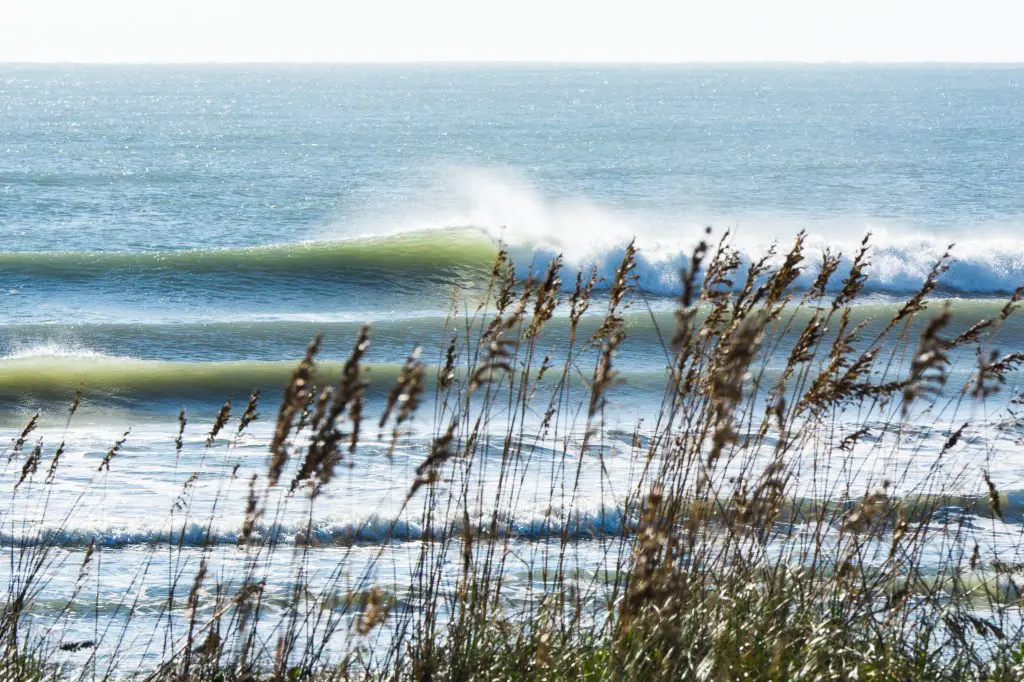
He'll spend about ten minutes on land with you, showing you the basics and then putting you in the waves.
The rest is a matter of trying, having fun and trying again.
Sandy will teach you to respect the ocean, understand board anatomy, paddle, climb and stand.
It will also teach you some useful surfing lingo. Don't worry, Sandy is also certified in First Aid, CPR and has experience as a lifeguard.
Sandy supplies all the equipment – surfboard, rushguard and wetsuit.
There is no age limit.
Florida Beer Company
Address: 200 Imperial Blvd, Cape Canaveral, FL 32920
Craft beer lovers love going to breweries to see the technology and shiny machines and chat with the scientists who make hops and other grains our favorite drinks.
Then there are those who enjoy taking tours of the brewery, some to see the process and others to get free samples.
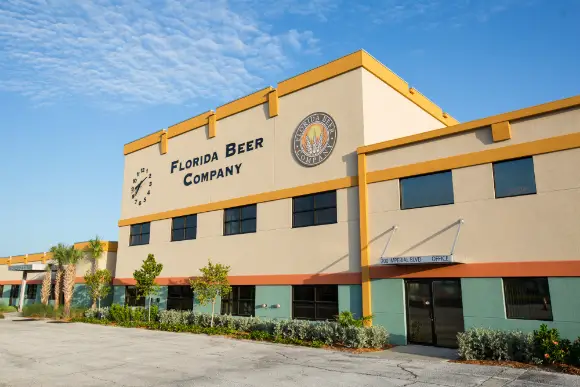
Visit the Florida Beer Company tavern to sample the latest beers, watch live music, listen and talk about beer.
It is truly fascinating to visit the 60,000 square foot facility of this largest craft beer company in Florida, and in one tour you can sample four samples of their latest beer.
But visiting the tavern is much more fun. You can try all of their award-winning beers on tap and there is something for everyone.
Live music, fun nights and other activities and, of course, lots of people wanting to chat over beer.
Sebastian Inlet State Park
Sebastian Inlet State Park is located on Highway A1A in Melbourne Beach and is particularly popular with surfing enthusiasts.
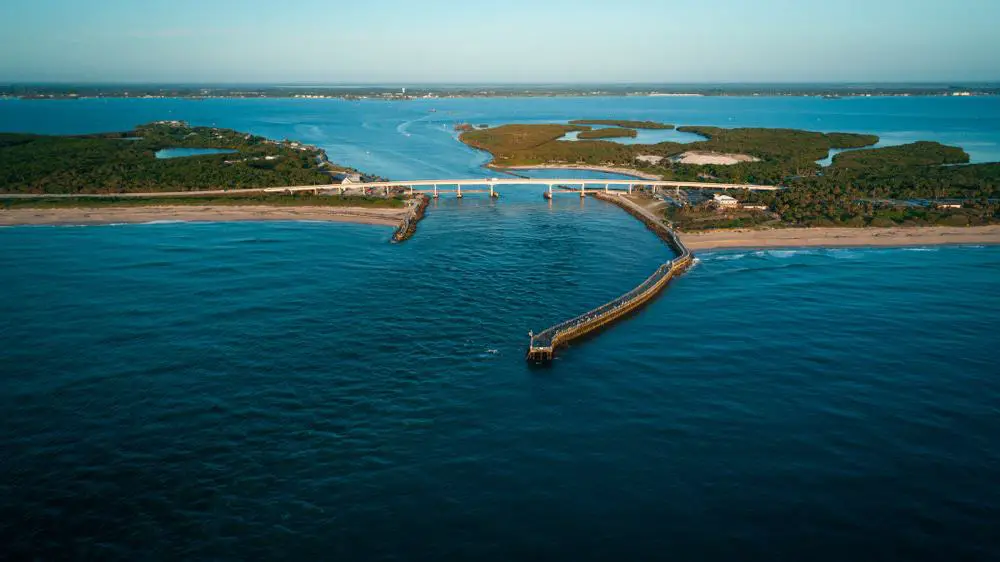
The park's docks provide easy access to some of the sun's most popular game fish, such as bluefish, bass, redfish and mackerel.
There's also an on-site fishing museum, which is a great place to retreat when the sun gets hot, and there are nearly three kilometers of beautiful beaches that are also popular with swimmers, sunbathers and divers.
There are also indoor multipurpose trails and an underwater treasure museum. So plan on more than an hour or two.
Tropic Ice Cream
Address: 6200 N Atlantic Ave Suite 1, Cape Canaveral, FL 32920
Tropic Ice Cream on Avenida do Atlântico Norte in Cape Canaveral is known for its traditional ice cream feel and a wide range of offbeat and unique flavors and is the perfect place to end a fun day.
Past guests have been pleased with the large portion sizes and surprisingly affordable prices.
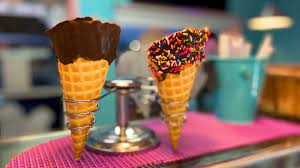
Due to its location near many Cape Canaveral attractions, Tropic Ice Cream can get crowded during peak times, especially at peak times. Weekends in the late afternoon.
There's even a separate ice cooler with nuts, so for allergy sufferers this is the safest environment you're likely to find.
Best Hotels in Cape Canaveral
Something we always recommend is book your hotel as soon as possible. So you already guarantee good prices and can plan the rest of your trip with peace of mind.
And of course, for your reservation we always recommend that you make it in reliable places like hotels.com or expedite and avoid falling into robbery!
For hotel, we recommend that you make your reservation through hotels.com, which is one of the best websites for hotel reservations and with the best prices. See the list of prices and available hotels here.
Country Inn & Suites By Radisson, Port Canaveral
Country Inn & Suites by Radisson, Port Canaveral, FL is located less than a mile from the cruise port.
The property offers upgrades to long-term parking, and guests can enjoy a continental breakfast during their stay.
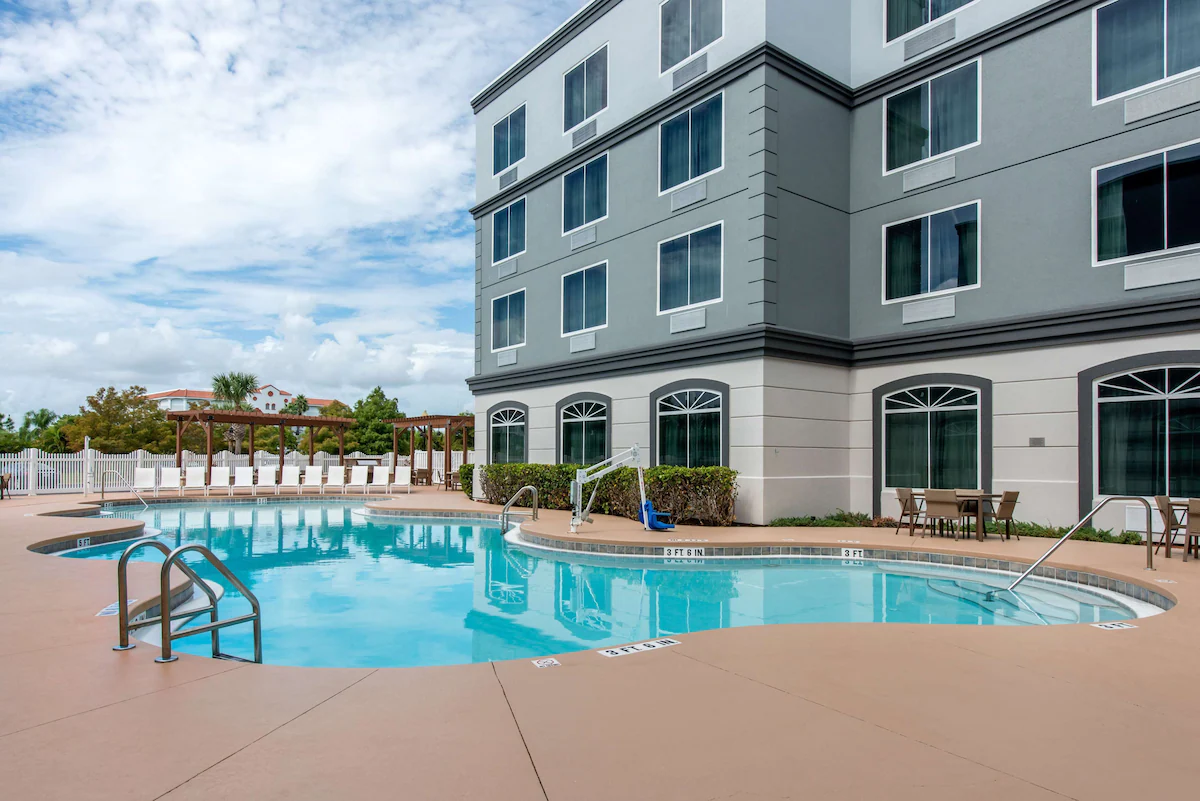
All rooms at this Cape Canaveral hotel include free WiFi, cable TV, as well as a microwave, refrigerator and coffee maker.
Guests at Country Inn & Suites by Radisson in Port Canaveral, FL can relax by the outdoor pool and hot tub. In addition, the property has a gym and laundry facilities.
This hotel is just 25.6 km from the John F. Kennedy Space Center.
Make your reservation here for Country Inn & Suites By Radisson.
Courtyard by Marriott Titusville Kennedy Space Center
Located in Titusville, Florida, Courtyard By Marriott Titusville Kennedy Space Center is 12 km from Skydive Space Center.
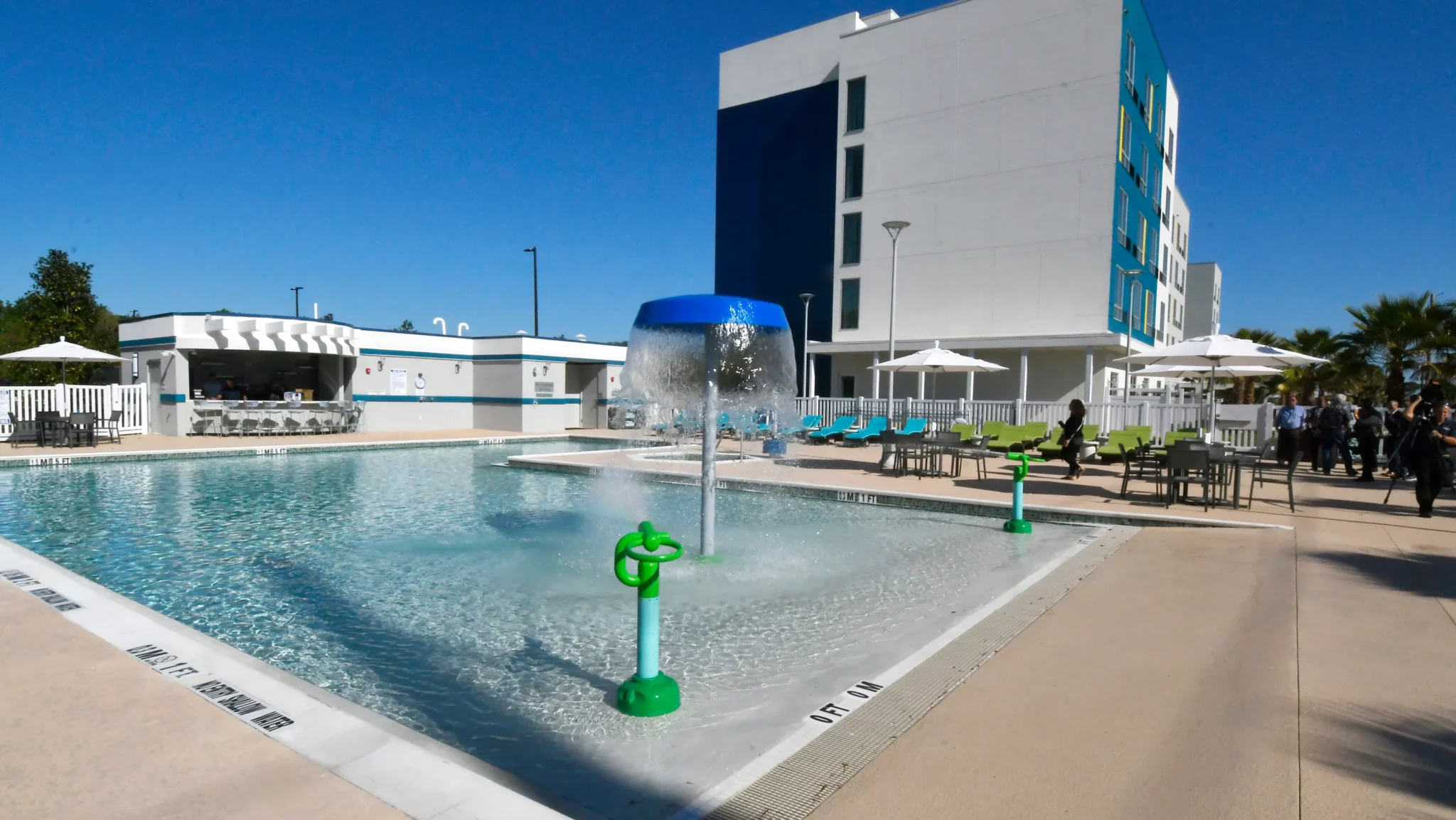
Make your reservation here for Courtyard by Marriott Titusville Kennedy Space Center.
Ramada by Wyndham Titusville/Kennedy Space Center
There you will find non-smoking rooms that include microwaves, mini-fridges, flat-screen TVs and free Wi-Fi.
Enjoy and enjoy coffee and juice in the front lobby.
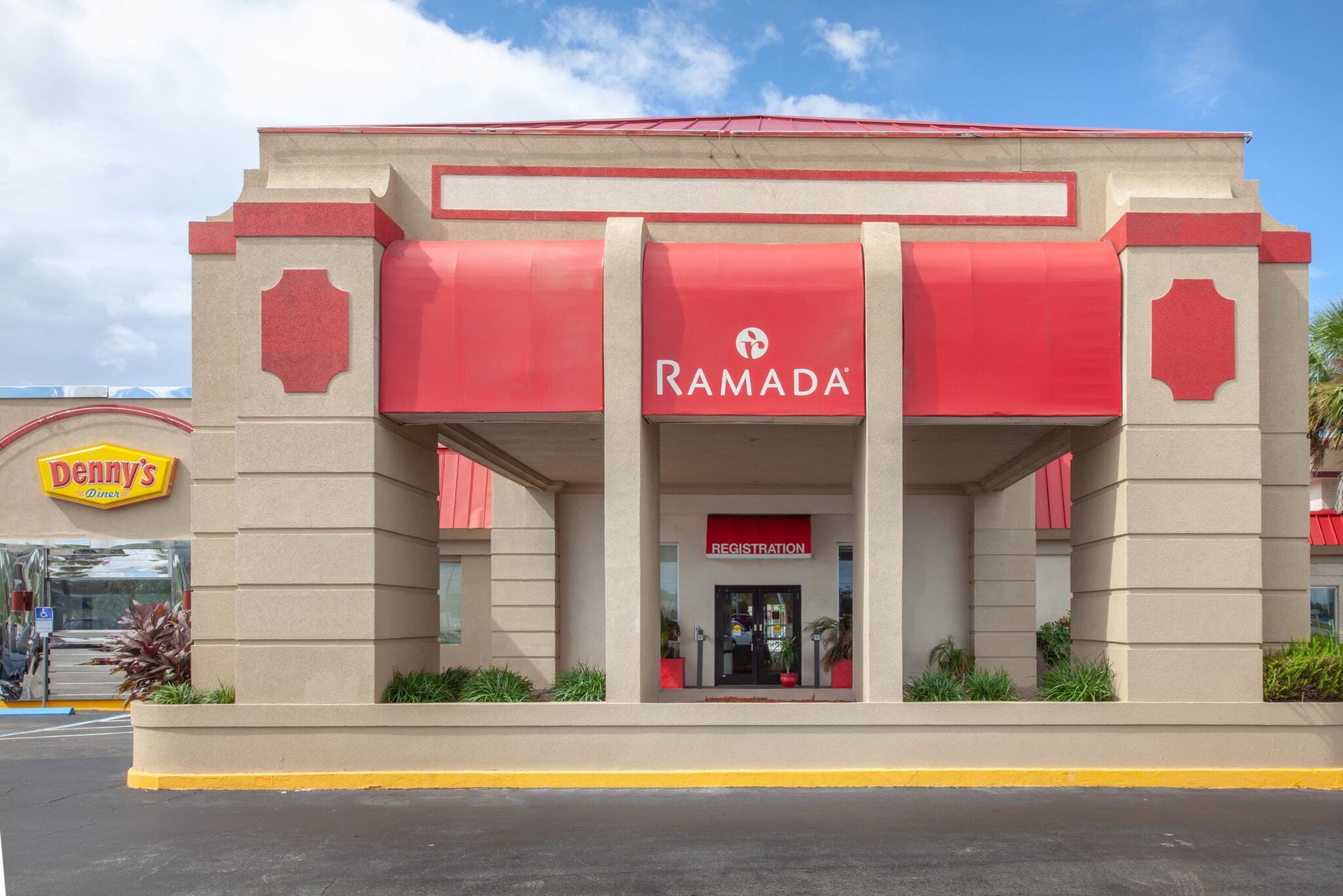
Relax by the outdoor pool, work out in the gym and unwind in the hot tub.
A business center is also available at the hotel.
Make your reservation here for Ramada by Wyndham Titusville/Kennedy Space Center.
Hyatt Place Titusville / Kennedy Space Center
Situated in Titusville, 16 km from Skydive Space Center, Hyatt Place Titusville Kennedy Space Center features accommodation with a fitness center and free private parking. The accommodation features a 24-hour front desk and free WiFi throughout.
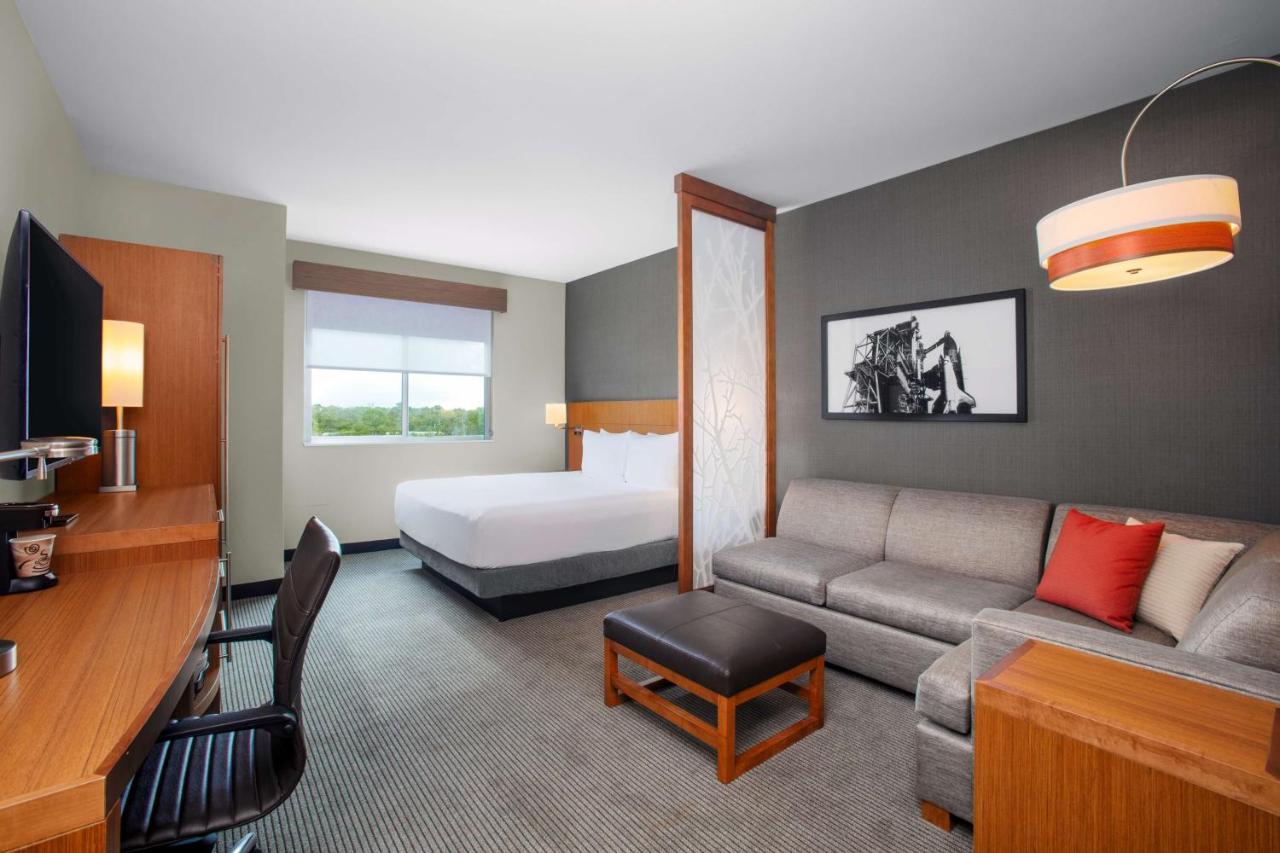
The hotel serves a continental breakfast daily.
The nearest airport is Orlando International Airport, 59 km from Hyatt Place Titusville Kennedy.
Make your reservation here for Hyatt Place Titusville / Kennedy Space Center.
map of cape canaveral
As you can see, there are many activities to do in Cape Canaveral. For your convenience, we've included a Wanderlog map so you can easily see where all these attractions and activities are located.
Cape Canaveral History
By the late 1950s, it was clear that geographic Cape Canaveral was running out of space, with launch sites along the coast from end to end.
In April 1960, the Department of Defense issued a report stating that ?(Cape Canaveral is) substantially saturated with missile launch facilities and test instrumentation.?
This revelation proved problematic for the space program, especially an ambitious effort by NASA to build a vigorous manned spaceflight program.
In support of NASA's human spaceflight activities, it became clear that more land for launch areas was needed.
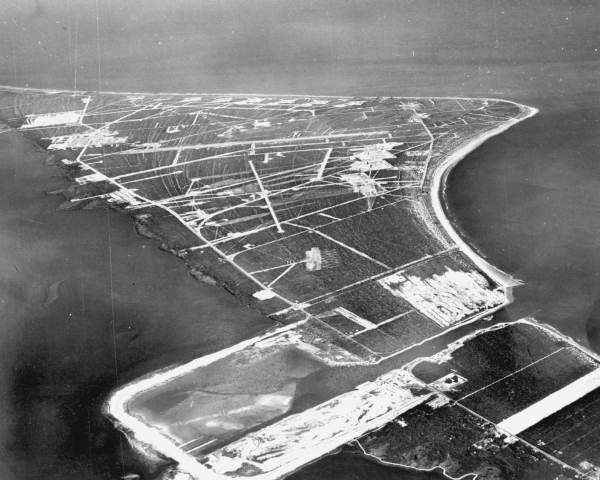
Even before NASA embarked on a manned lunar landing program, the space agency planned to dramatically expand the use of large, heavy rockets.
The first of these was the Saturn I, which was designed in various configurations to suit NASA's manned and unmanned applications.
NASA's initial predictions were for up to 100 Saturn-type rocket launches per year.
Cape Canaveral could only host two Saturn I launch complexes, Launch Complex 34 and Launch Complex 37.
The former could accommodate a maximum of four Saturn I launches per year, while Launch Complex 37 could accommodate a maximum of eight Saturn I launches per year.
It became clear that if NASA required 100 Saturn-type launches per year, or even 20 Saturn-type launches per year, as mentioned in more conservative forecasts, more land would be needed than is available at Cape Canaveral.
NASA also envisioned bigger and bigger rockets to be introduced in the future. These rockets could not be repaired within geographic Cape Canaveral.
In early 1961, NASA developed and refined a mobile launch concept whereby a central processing area would serve multiple launch pads.
This would make launch processing more efficient, decrease the time a rocket spent on the launch pad, and decrease the amount of terrain required for each individual launch area.
Early mobile launch concepts called for a vertical transfer of the rocket from a central mounting area to the launch pad by barge or train.
In April 1961, NASA's Office of Future Launch Systems issued a report recommending that the mounting area and transfer method be designed specifically for the rocket in use.
A design for the specific technical criteria for the next Saturn-type launch complex, named Launch Complex 39, was scheduled to be decided no later than January 1964.
The decision was made to design the launch complex to be technically compatible with any program NASA would support, even if it was substantially more expensive than existing launch complexes.
At the time, NASA had not yet decided on a method of sending men to the Moon and returning them safely to Earth.
Therefore, the design of a new launch complex would have to wait until a specific program was adopted.
There were three basic methods proposed, each of which would require different launch concepts.
The first would employ a massive rocket called Nova, which would send astronauts on a direct ascent to the moon.
The second envisioned the launch of several Saturn-type rockets, followed by an Earth-orbiting encounter and then a trip to the moon.
The third provided for the launch of several Saturn-type rockets, followed by a rendezvous in lunar orbit.
An announcement by President John F. Kennedy on May 25, 1961 that the United States would send men to the Moon and return safely to Earth in the late 1960s forced NASA to establish a launch method and build its new launch facility. release as soon as possible.
Nova's super reinforcement plan was rejected early, because it could not have been carried out until after 1970 at the earliest.
Either of the two multiple methods of launching Saturn-type rockets would be better, but would still require the construction of a new large launch site.
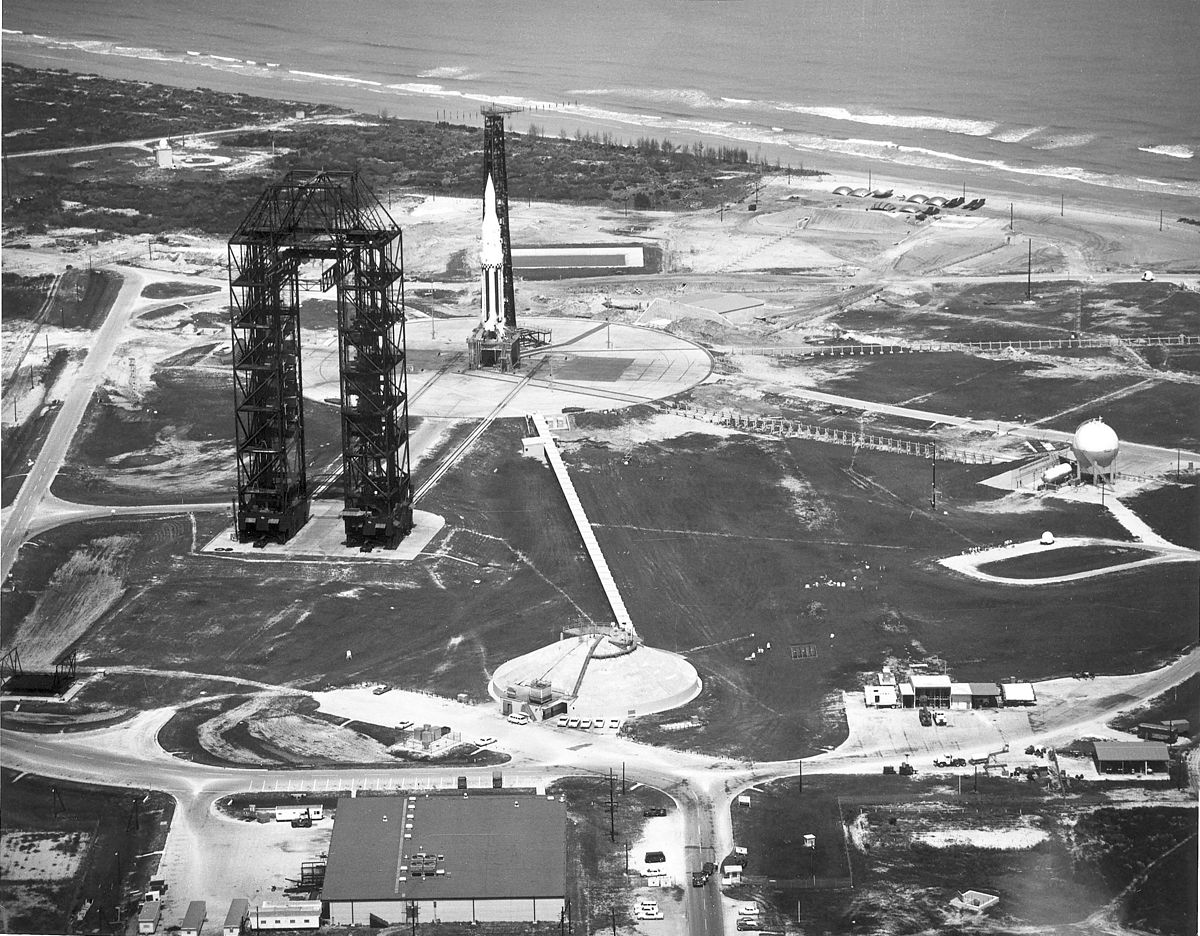
On June 16, 1961, an ad hoc committee of NASA's Office of Space Flight Programs, headed by William Fleming, recommended that the construction of a new NASA launch site be given high national priority.
The Cape Canaveral-based NASA Launch Operations Directorate (LOD) and the Air Force Missile Test Center (AFMTC) were given responsibility for reaching agreement on a launch site.
In July 1961, the basic technical requirements for the launch site were decided. These requirements include:
Vertical mounting and verification of the rocket on a mobile launcher umbilical turret housed in an environmentally controlled building,
Transfer of the assembled rocket and mobile launcher to the launch pad for final verification, fueling and launch,
Control of launch operations from a remote launch control center with two firing rooms, one for verification and one for launch,
Automated checkout and rocket launch.
A rail-style transfer system from rocket to launch pad was initially considered the most viable, but barge or even road transfer was also maintained as viable options.
As larger variants of the Saturn rocket emerged from the drawing boards, NASA refined the criteria to include more buildings for spacecraft processing and launch control, a launcher/carrier with a pedestal for the rocket, and an armament turret located midway. between the assembly area and the launch pad where solid propellant devices and munitions would be installed.
Although Merritt Island, located north of Cape Canaveral, continued to be the primary site of choice for NASA, a conflict with the Air Force developed.
The Air Force wanted to reserve this land to allow for expansion of the Air Force's rocket programs. This forced NASA to review the following possible launch sites:
– Merritt Island
– Artificial installations off the coast of Cape Canaveral
– Mayaguana Island, Bahamas
– Cumberland Island, Georgia
– Mainland location near Brownsville, Texas
– White Sands Missile Range, New Mexico
– Christmas Island, South Pacific
– South Point, Island of Hawaii
White Sands was rejected because the location was inland.
Excessive development costs except Mayaguana, Christmas Island and Hawaii. Brownsville, Texas, was eliminated because the missiles had to fly over populated areas.
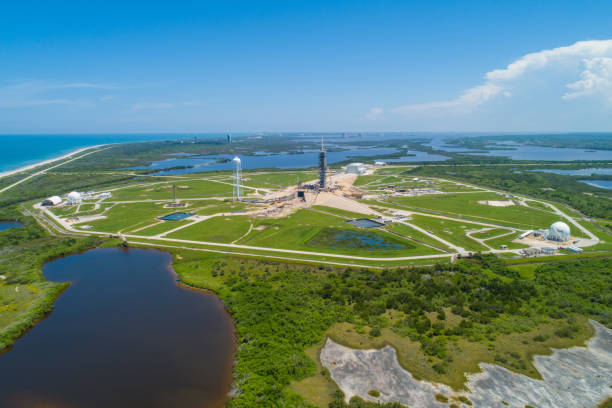
Cumberland Island was rejected due to unacceptable disruption to the Intracoastal Waterway and lack of infrastructure.
In fact, building an artificial launch site off the coast of Cape Canaveral only cost 10% more than building a launch site on Merritt Island, but maintenance costs have increased as astronomically predicted.
Because of these prevailing factors, Merritt Island remained the only logical choice.
Merritt Island caused only two negative factors, namely the high cost of acquiring the land and the above-average cost of utilities.
Merritt Island remained a natural choice due to a strong rocket-based economy, talented workforce, and existing Cape Canaveral infrastructure that did not need to be duplicated.
As a result, NASA applied for a grant to purchase it in January, landing on Merritt Island on September 7, 1961.
The first contract was for an area of 200 square miles immediately north and west of the existing launch sites at Cape Canaveral.
On September 21, 1961, the Army Corps of Engineers was asked to buy land or buy land.
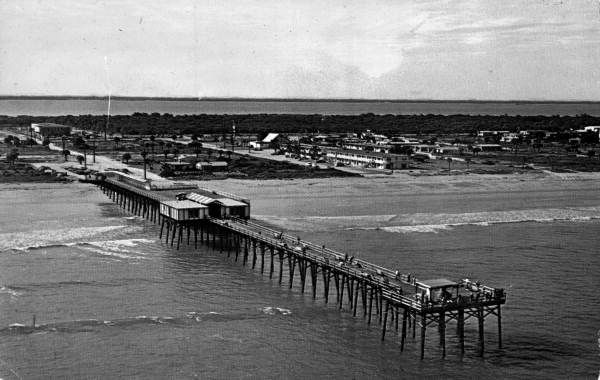
Condemnation to begin with. Most land was acquired in partnership with landowners, but, as in the case of Cape Canaveral, some landowners exhausted the process before leaving or selling.
This gave NASA access to land, but there are no firm plans for a launch site. In November 1961, the Saturn C-5 (later renamed Saturn V) was proposed as a launcher, believed to be more efficient to support lunar landing missions.
It wasn't big enough to support a direct moon rise, but it was big enough to fly all the elements in a single rocket for the other moon landing opportunities.
Development of the Saturn V began on December 4, 1961 closed. In January 1962, the Saturn V was officially selected as a rocket to assist manned flights to the moon.
With the decision in hand, NASA began refining its design for Launch Complex 39 on Merritt Island. .
Conflicts with the Air Force over range use continued as NASA sought its own jurisdiction over its own launch activities.
The Air Force attempted to continue range control at Cape Canaveral with NASA as the lessee.
The Air Force saw Merritt Island as an extension of the Cape Canaveral range, but NASA wanted its own property rights.
Since provision of expanded Air Force facilities on Merritt Island was also an option, a joint NASA-Air Force team began meeting on February 19, 1962 to resolve logistical issues. It would take about a year to resolve these issues.
In the meantime, the design of Launch Complex 39 was rapidly taking shape.
The biggest technical challenge was transporting the huge Saturn V from the assembly area to the launch pad.
Transport by barge was considered unsafe due to wind resistance, and a railroad was considered too expensive.
NASA decided on a crawler/carrier based on the 2700-ton Bucyrus-Erie crawler shovel.
The track bed could be built for half the cost of a railroad, so Bucyrus-Erie introduced changes to its excavator design in March 1962 to transport a Saturn V for NASA.
The treadmill/treadmill concept was approved by NASA on June 13, 1962.
Projects for rocket assembly, launch control centers, launch pads and extensive industrial support areas also took shape in 1962.
The total cost of launching Complex 39 was estimated at US $ 500 million, with an estimated construction time of three years.
Marshall Space Flight Center in Huntsville, Alabama, was responsible for building the Saturn V rocket. Canaveral were selected to manage the overall integration, testing, and release.
On March 7, 1962, NASA announced that Launch Complex 39 would be established as an independent enabler of NASA.
As a result, the Launch Operations Directorate (LOD) was renamed the Launch Operations Center (LOC). The Doctor. Kurt Debus has been named director of the LOC after previously serving as director of the LOD and director of the missile launch laboratory at the Army Ballistic Missile Agency in Cape.
The conflict between the Air Force and NASA over the management of launch facilities on Merritt Island was resolved on January 16, 1963, when an agreement was signed by NASA Administrator James Webb and Secretary of Defense Robert McNamara.
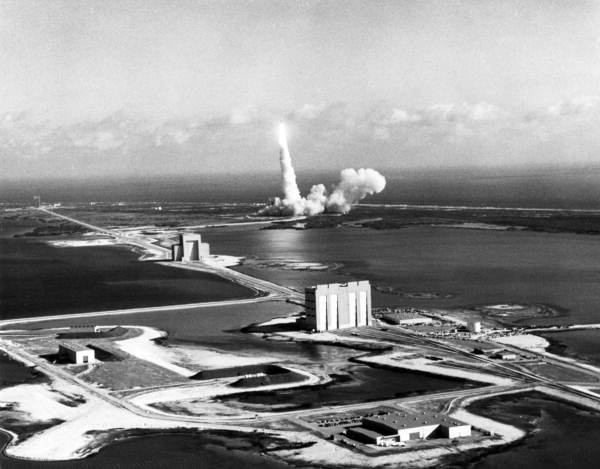
The agreement emphasized the high national priority of NASA's manned lunar landing effort and stated: "The Merritt Island Launch Area (MILA) is considered a separate and distinct NASA facility from the Atlantic Missile Range."
NASA received title and management of its property on Merritt Island.
The Air Force continued to manage the range, with a NASA designated user. NASA has agreed to expand its land purchases by 40 square miles to provide enough land for future Air Force expansion.
The Air Force decided to build a massive launch facility for its Titan III rockets on land dredged from the Banana River, north of Cape Canaveral. Only a small portion of southern Merritt Island was needed.
In 1963, NASA negotiated land use agreements for submerged lands, and the National Wildlife Service was authorized to administer land unnecessary for development.
This resulted in the creation of the Merritt Island National Wildlife Refuge.
The National Wildlife Refuge was authorized to manage leases in citrus groves, fishing grounds, and operate Playalinda Beach, a long, pristine beach that stretches north of Launch Complex 39.
NASA retained all other aspects of MILA management.
NASA's land acquisition totaling about 88,000 acres was completed on February 1, 1964.
As was the case at Cape Canaveral, existing buildings, including an abandoned Standard Oil gas station, were adapted for another use by NASA.
The dates differ exactly when Launch Complex 39 was activated, but there are three main dates to consider, one for each of the three main areas of the launch site.
A closing ceremony was held atop the Vehicle Assembly Building on April 14, 1965, marking a milestone in the assembly area.
The Kennedy Space Center headquarters was formally opened on May 26, 1965, marking a milestone in the industrial area.
And on May 25, 1966, just five years after President Kennedy's famous term, a Saturn V dummy designated the Saturn V 500-F was removed from the Vehicle Assembly Building for Launch Pad 39A, marking a milestone in the launch pad area.
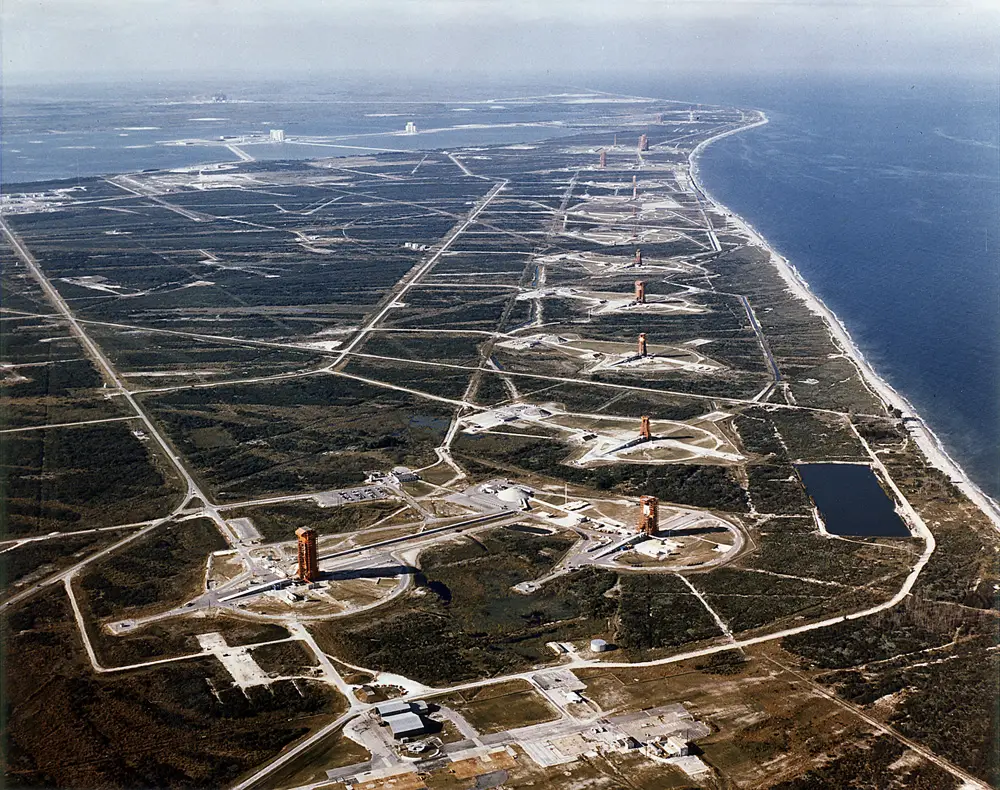
A flurry of activity followed, involving two launch pads, Launch Pad 39A to the south and Launch Pad 39B to the north.
This activity culminated in the launch of Apollo 11 from Launch Pad 39A on July 16, 1969.
In fact, a new spaceport had sent the first men to the moon and back. Today, Launch Complex 39 remains largely intact, having supported the Space Shuttle program and, currently, the launches of Falcon 9 and Falcon Heavy for SpaceX.
On November 28, 1963, President Lyndon B. Johnson announced in a televised address that Cape Canaveral would be renamed Cape Kennedy in memory of President John F. Kennedy, assassinated six days earlier.
President Johnson said the name change was sanctioned by the US Geographical Names Council.
Executive Order Number 11129, issued by President Johnson on November 29, 1963, decreed that the NASA Launch Operations Center (LOC), including facilities at Merritt Island and Cape Canaveral, would be renamed the John F. Kennedy Space Center, NASA. This name change officially took effect on December 20, 1963.
The Air Force later renamed the Cape Canaveral Missile Test Attachment to Cape Kennedy Air Force Station (CKAFS).
This name change took a little longer, but it became official on January 22, 1964.
The city of Cape Canaveral, incorporated in 1962 and sandwiched between Port Canaveral to the north and Cocoa Beach to the south, decided by city council vote not to change its name, although the debate was fierce. The name of Port Canaveral also remained unchanged.
The US Geographical Names Council confirmed the geographical name change from Cape Canaveral to Cape Kennedy in its Decision List Number 6303, September-December 1963, published in the spring of 1964.
On May 15, 1964, the Air Force Missile Test Center was renamed the Air Force Eastern Test Range.
This decision was made by the National Range Division, which was formed by the Air Force on January 2, 1964 to develop an integrated National Range missile network.
Also on May 15, 1964, the Atlantic Missile was launched. Range re-denotes the eastern test range.
This name change did not cause controversy, however, while the Cape Kennedy name was contested against the Cape Canaveral name.
After a ten-year campaign by Florida residents failed to convince the US Congress to change Cape Kennedy's name back to Cape Canaveral, a name that had been used for 400 years, Florida lawmakers swung into action.
On May 18, 1973, Florida Governor Reubin Askew signed a Florida statute requiring the renaming of Cape Kennedy to Cape Canaveral on all official Florida state documents and maps.
The US Geographical Names Council responded on May 9, 1973, and October 1973 by agreeing to officially recognize the name change from Cape Kennedy to Cape Canaveral on a national level.
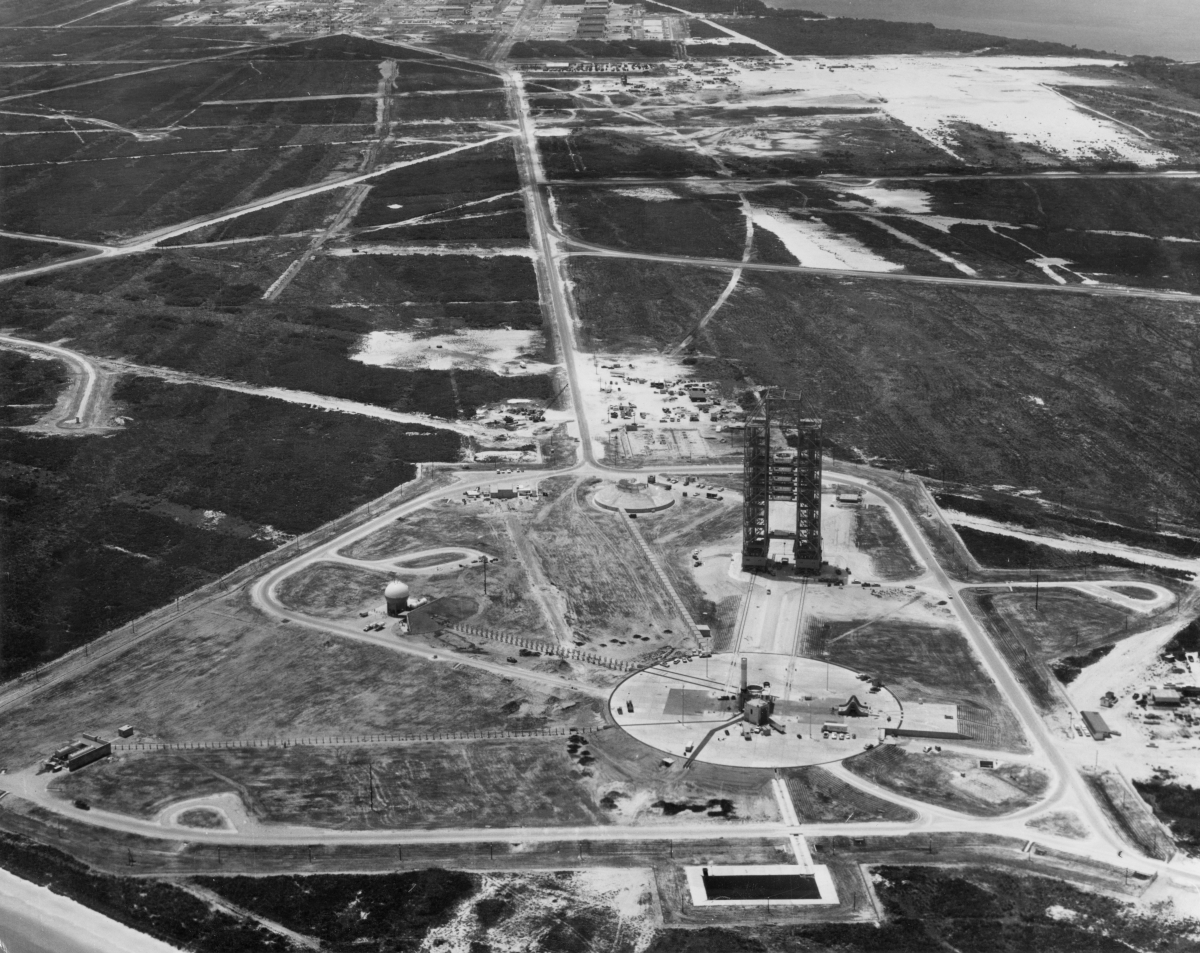
The name John F. Kennedy Space Center, NASA, remained the same.
Cape Kennedy Air Force Station was later renamed Cape Canaveral Air Force Station (CCAFS), a name that would continue for the next two decades.
The Air Force's Eastern Test Range was decommissioned on February 1, 1977. Patrick Air Force Base's assets were the 6,550th missile deployed to Vandenberg Air Force Base, California.
This reorganization was seen as a temporary cost-cutting measure. The immediate result was to bring the Eastern Test Range, which retained its name, and Vandenberg AFB's Western Test Range under the same leadership.
The Eastern Missile and Space Center was activated at Vandenberg AFB. Patrick will assume responsibility for all activities on the Eastern Test Range on October 1, 1979.
On October 1, 1990, the Eastern Missile and Space Center was transferred from Air Force Systems Command to Air Force Space Command for the purpose of establishing a new operational wing to oversee operations at the eastern test field.
The new operational wing was established as the 45th Space Wing on November 12, 1991.
In 1992, the Air Force Space Command issued a special order removing the Force's name from all Air Force stations under its command.
This was done in an effort to standardize the names of facilities within the Air Force Space Command.
As a result, Cape Canaveral Air Force Station (CCAFS) was renamed Cape Canaveral Air Station (CCAS).
On February 4, 2000, the Air Force Space Command overturned its 1992 decision with Special Order GB-005.
This special order reintroduced the word Force into all air station names under his command.
The decision was made to respond to criticism within the Air Force community that air stations classified Air Force air stations not air stations into different branches of the Force, such as Naval Air Stations.
The decision should also be specifically designed to thank Air Force personnel involved in the day-to-day operations of each air station.
As a result, Cape Canaveral Air Station (CCAS) was renamed Cape Canaveral Air Force Station (CCAFS) as it was originally called in 1973.
The Oriental Test Strip was eventually changed to the East Strip, as it is called today. In 2020, Cape Canaveral Air Force Station was renamed Cape Canaveral Space Force Station (CCSFC) and Patrick's Air Force Base was renamed Patrick's Air Force Base in recognition of the establishment of the U.S. Space Force in December 2019 and its role in administration. these places.
I hope again that this post helped you in your research for your trip to Disney or Orlando.
As a way to help us keep the blog going, we just ask you to help us by sharing this publication and subscribing to our social networks as Facebook, Instagram or Youtube channel.
In addition to helping us, we are sure that there you will find hundreds of useful posts for your trip!
About the Author Carlos Braga:
Unparalleled experience in Orlando and Disney! As a former Universal Orlando team member and a passionate devotee of the magic of Disney, I have become a true Orlando travel expert. Before becoming a renowned travel consultant dedicated to Orlando, I had already made hundreds of visits to the parks, cultivating my knowledge and passion mainly over the last 7 years as a consultant and specialist in Disney travel.
My journey into this enchanted world began in 1995, when I took my first trip to Orlando. Since then, my love for Disney and the city has only grown. In 2023, we celebrate the sixth anniversary of 'Partiu Disney Parks', consolidating our role as one of the main sources of information about Disney and Orlando Parks.
During these six years of existence, we have continued to offer quality and updated content, being the reliable source for all those looking for essential information to plan their trip to Disney and Orlando. With my vast experience and passion for this magical destination, I am here to guide you every step of the way towards the most incredible Orlando and Disney experience!

